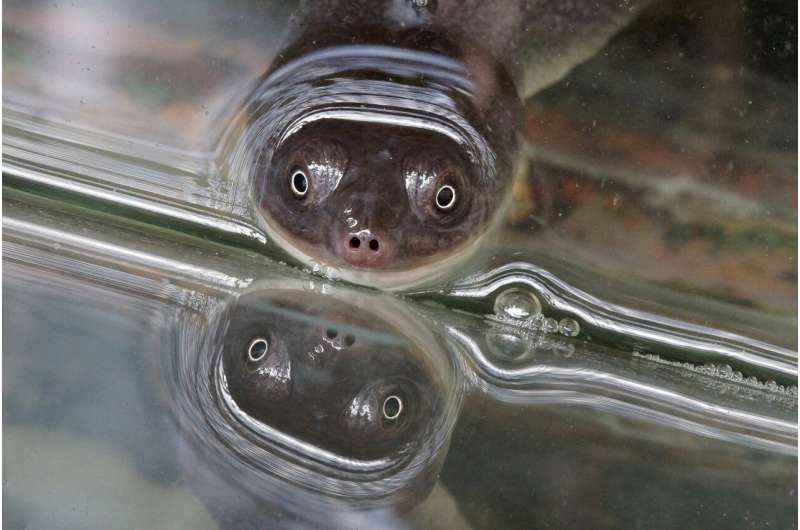This article has been reviewed according to Science X's editorial process and policies. Editors have highlighted the following attributes while ensuring the content's credibility:
fact-checked
trusted source
proofread
New research suggests ways to improve underpass design for freshwater turtles

Freshwater turtles are among the most threatened groups of vertebrates globally and in the modern world of highly urbanized wetlands, they fight a constant battle for survival once they leave the safety of their aquatic home to nest on land.
Until now, limited information has existed on the effective design of eco passages to enable their safe movement from one side of the road to another.
Researchers from Murdoch University's Harry Butler Institute have studied the southwestern snake-necked turtle (Chelodina oblonga)—found in the southwest of Western Australia—and discovered that this "Near Threatened" species (as listed by the International Union for Conservation of Nature) would likely significantly benefit from installation of newly designed tunnels, as well as simple changes being made to existing wildlife tunnels, to improve their chances of a successful and faster road crossing.
This study provides the first account of the factors that may optimize successful tunnel passage by southwestern snake-necked turtles to reduce road-related mortality, contributing to the conservation and management of the species and freshwater turtles more generally.
Harry Butler Institute turtle ecologist Dr. Anthony Santoro says the freshwater turtles' vulnerability to vehicle mortalities called for this study of their behavior and will help develop effective strategies to improve their safety.
"Freshwater turtles undergo seasonal migrations across terrestrial landscapes for nesting, as well as movement away from undesirable habitat conditions," Dr. Santoro said.
"As part of this research, we tested whether differing light levels in tunnels affected their ability to use them successfully to therefore safely negotiate road crossings.
"Turtles in the light treatment were significantly more likely to cross the tunnel, with 97.3% of turtles in the light treatment successfully crossing, compared with only 30% of the turtles in the dark tunnels.
"Unfortunately, many of the current wildlife tunnel passages in Perth are dark."
Dr. Santoro said the research has led to the team suggesting simple changes which could have a major impact on the future of freshwater turtles.
"As a result of this study, our suggestions are either to construct new underpasses with open grate tops in wetland areas surrounded by roads, where vehicle-strikes of the turtles commonly occur, or to modify existing underpasses to increase light levels.
"Where this is not possible, artificial lighting could be installed, which may have similar effects to natural light; either option would likely reduce road-related mortality."
The group has suggested complementary monitoring would also be useful to provide additional and further understanding of underpass use by the turtles.
More information: Anthony Santoro et al, Optimizing road underpass design to maximize use by a freshwater turtle (Chelodina oblonga), Aquatic Conservation: Marine and Freshwater Ecosystems (2023). DOI: 10.1002/aqc.3982
Provided by Murdoch University

















